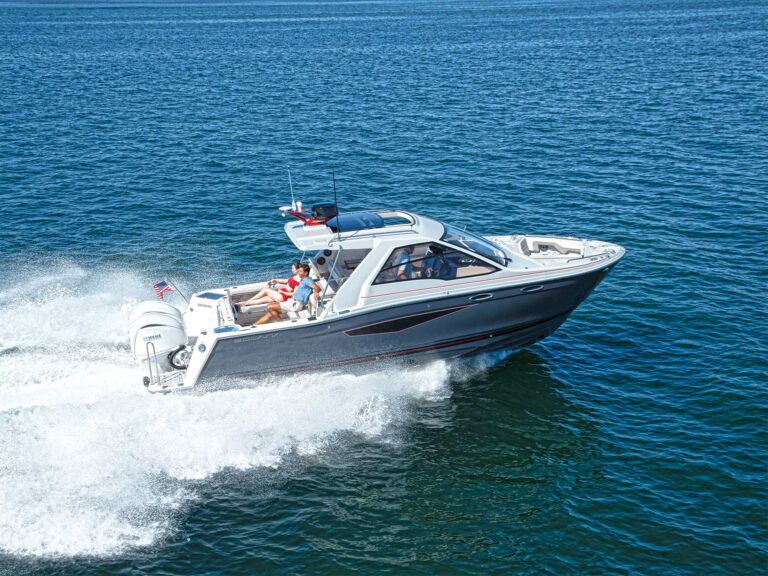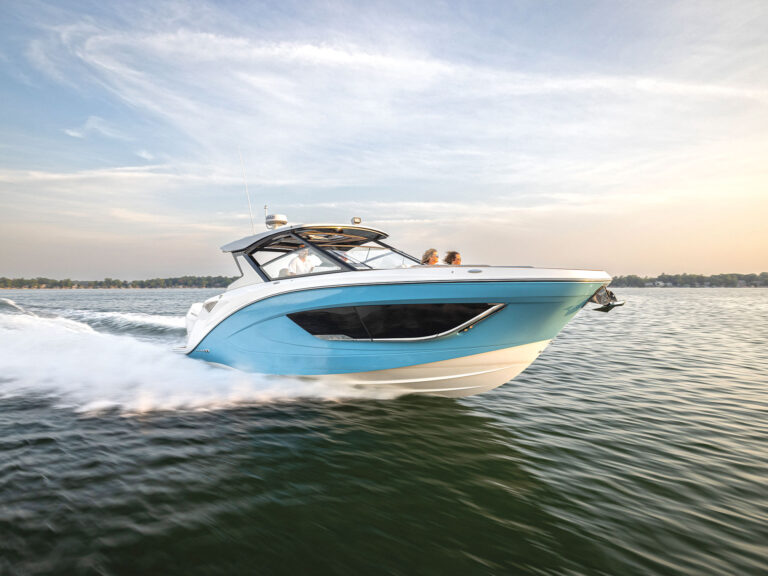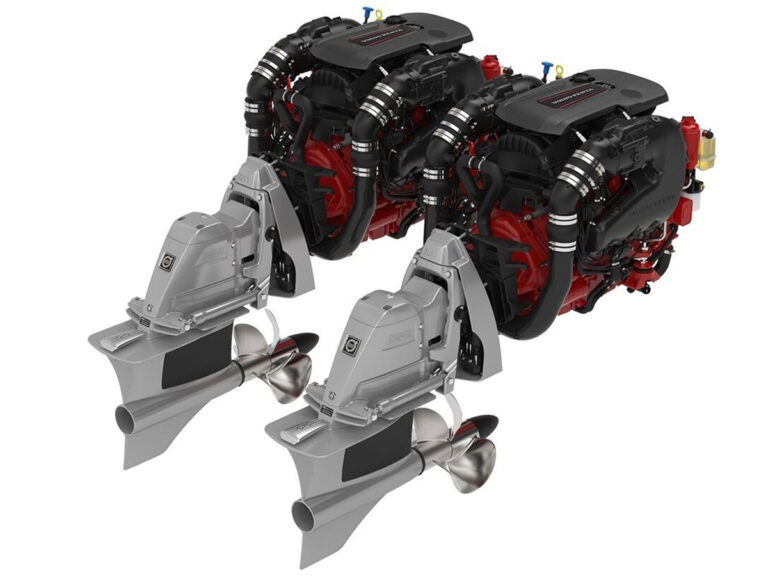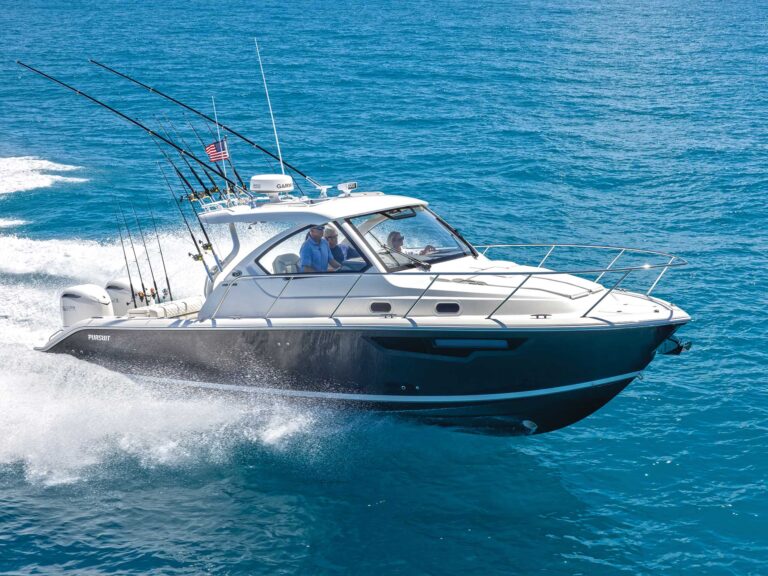Q: My 1999 Regal 2150 LSC with a 240-HP MerCruiser EFI has been sounding an alarm during acceleration. Oil pressure, water temperature, and drive oil are normal. Does EFI sound the alarm similar to the way the “check engine” light in a car illuminates? If so, does the computer store this error information? Are marine electronics as reliable as automotive electronics?
-Jack Cookson, Mystic, CT
A: Newer EFI-equipped engines such as yours do store fault codes that can be read later. Trouble is, not all dealers have the equipment to read them. This situation is getting better all the time, particularly with the introduction of less-expensive systems that are used in conjunction with a laptop. If you buy one of these systems, you get the software and the engine harness connector cable that allows your laptop to tap into the engine management computer. These packages sell for $600 or so. You’ll have to get a book from the manufacturer to decipher the codes.
When an alarm sounds, it’s often nothing more than a water temperature or oil pressure sender putting out an anomalous reading. Check all your gauges. If an alarm sounds and the gauges indicate normal conditions, unplug the two senders, one at a time. The one that quiets the alarm is likely toast.
As to your question about the reliability of these systems, yes they’re on par with those used on automotive engines. And like automotive ones, most of the problems are caused by sensors that are worn out, dirty, or defective. The computers themselves rarely seem to die.
Sensitive Sensor
Q: I can use some help with my 7.4 MPI MerCruiser. The engine started to surge a month ago. I changed the fuel filter, then the fuel pump. I had a MerCruiser dealer check the computer for fault codes. Everything checked out. Then I checked the fuel vent to make sure it wasn’t obstructed. It wasn’t. Next, I changed the throttle and checked for vacuum leaks. No improvement. Most of the surging occurs from 2800 to 3600 rpm. I also removed the distributor cap and checked the rotor. I’m at a loss.
-Dan Hartwell (via e-mail)
A: Since you’ve tried almost everything else, let me tell you what it sounds like. Either the MAP (manifold absolute pressure) sensor or the throttle position sensor are at fault. The better bet is the MAP sensor. This device measures the vacuum in the intake manifold so the computer knows how much load the engine is under. It does this by converting pressure into a signal that the engine management computer can read.
I think the codes need to be checked again. A MerCruiser dealer with the correct diagnostic equipment can read the fault codes and pinpoint the problem in a flash. By the way, even though a lot of boats have newer engine management systems with computers, the laws of physics haven’t been suspended. A vacuum leak is still a vacuum leak.
Engine management systems are sophisticated, but they can’t pinpoint things they don’t have sensors for. Such a system may not be able to find something as simple as a corroded ground lead or a pinched wire. Only a person can troubleshoot those problems.
The first step in any troubleshooting endeavor, even with a computer-controlled engine, is to check the easy stuff. Corroded or damaged wiring and connections are a good place to start. So even if you’re running a newer engine, don’t hang up those old-fashioned skills yet. They’re just as necessary now as they ever were.
Surge Ahead
Q: My 1999 Sea Ray Sundancer with a MerCruiser Bravo Three has had an ongoing problem that is so elusive the mechanics can’t find it. When driven after several days of nonuse, the engine labors and won’t exceed 3200 rpm at full throttle. Restarting after partial cool down typically results in better performance. After two or more hours of continuous use, performance improves, though it still won’t go past 4000 rpm.
-Mike Goodman, Grayslake, IL
A: Has the engine ever run up to its rated wide open throttle range? Here are MerCruiser’s recommended WOT ranges for the current Bravo Three models: all 4.3, 5.0, and 5.7 models except for the 350 Magnum: 4400 to 4800 rpm; 350 Magnum: 4600 to 5000 rpm; 7.4 models except for 454 Magnum: 4200 to 4600 rpm; 454 Magnum and 502 Magnum: 4600 to 5000 rpm. You may be running the wrong prop, and the engine may be badly overloaded. Is the prop clean and in good shape? Is the bottom of the boat clean? If everything checks out, then you do have a problem. Try to figure out a safe way to feed fuel to this engine from a separate fuel supply. If it runs without problems, give the engine a clean bill of health and concentrate your troubleshooting efforts on the fuel system. Warning: Obviously, the Coast Guard doesn’t smile upon running your boat’s engine with a portable fuel supply. It’s dangerous, but there are ways to make it less so. Use a six-gallon portable outboard fuel tank. Adapt the fuel line to your boat’s plumbing with correctly matched fittings and hose clamps where needed. Securely lash the tank in place so it won’t shift when the boat accelerates. Run hoses where they won’t get tangled in the drive belts, pulleys, or other moving parts. Also, make sure there’s no old outboard gas in the tank; you don’t want gasoline mixed with two-stroke oil. After the engine compartment has been vented so no gasoline fumes remain, start the engine and test your temporary fuel supply system for leaks. Run the engine at a fast idle for a few minutes and check for leaks. If you don’t find any, close up the engine compartment and take the boat out for a test run. If there’s no problem, the trouble is with the fuel supply system, not the engine. Start with the anti-siphon valve. You didn’t mention checking (or replacing) this component. It’s a small plumbing fitting installed where the fuel-feed line comes out of the tank. Finally, there’s often a screen that serves as a trash filter at the end of the fuel pickup tube. This screen can get corroded or clogged. Inspecting it is a pain because the tank has to be empty and you need to gain access to the inside of the tank to inspect the end of the pickup tube with a spark-proof flashlight.
To Trim or Tilt?
Q: I have a 1993 Thompson 210 Fisherman powered by a MerCruiser 4.3LX Gen II Alpha One. I have a question about trim and tilt controls. I normally bring the tilt down until the unit is level on the trim gauge and then adjust once underway. Would it make any difference, with regard to the gimbal bearings or any other components, if I initially brought the unit all the way down with the tilt and then came back to the level starting position with the trim?
-Mark Bennett, Chagrin Falls, Oh
A: It doesn’t make a bit of difference. I’d tilt the drives all the way down until they’re completely tucked in with negative trim. Then once you get the boat on plane and up to cruising speed, trim the drives out to give the bow lift and achieve maximum speed with the least fuel consumption.
Hot Tamale
Q: My 1993 Sea Ray 190 has a 175-hp Mercury outboard that keeps overheating. I’ve changed the impeller, water pump housing, and both thermostats, but it continues to run in the plus 200-degree range, ultimately sounding the high-temperature alarm. I’ve read through the shop manual but can’t find any help. I haven’t run aground or hit anything. Could there be a blockage? Is my only option to bring it in to be repaired by the local marina?
-Bill Shortall, Oklahoma City, OK
A: Yes, you should take it to be repaired. I wouldn’t settle for the local marina, however, unless it offers authorized Mercury service. Outboard manufacturers often make changes or discover service information that’s model specific. They publish these as Service Bulletins. There may very well be one or more of these that pertain to your engine’s cooling system. It doesn’t sound to me as if you installed a complete water pump kit. You mention replacing the impeller and the impeller housing, but you don’t say anything about the pressed-in, stainless-steel cup in the impeller housing and the stainless-steel impeller plate that’s underneath the impeller. Both of these parts wear and require periodic replacement. If you operate an engine in silt- or sand-laden water, you can render these parts useless in a matter of minutes. They can become scored or develop wear overall. If this is the first impeller you’ve installed in this engine, you’ve been very fortunate. Normally, you should install a new water pump kit every other year. A complete kit includes: impeller housing and cup, impeller plate, impeller, gasket, and new hardware (fasteners, drive key, and so on). For the owners of new outboards, many dealerships are suggesting water pump overhauls after every 100 hours of operation. And be sure to get the stainless-steel parts inspected and replaced if they show any wear. It’s cheap insurance compared to a fried engine.









